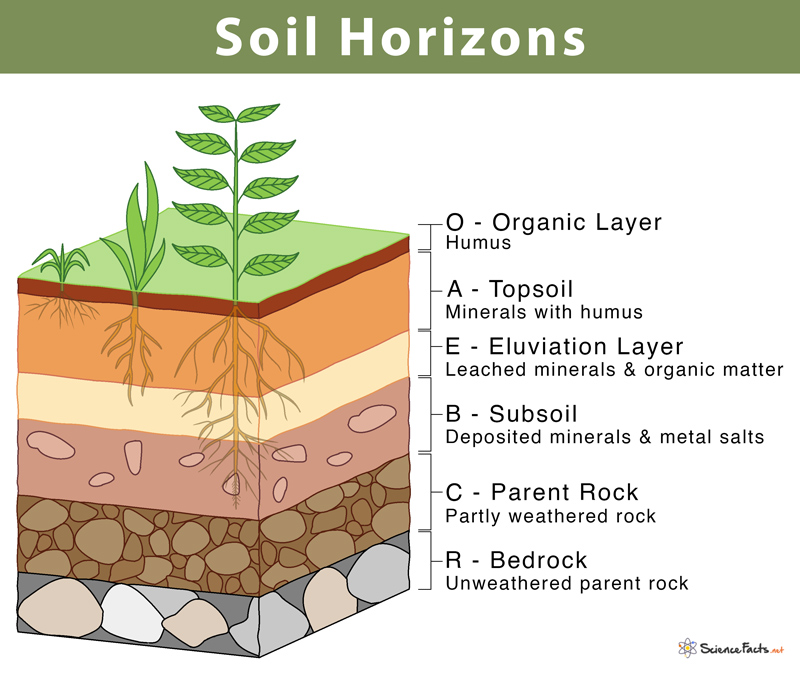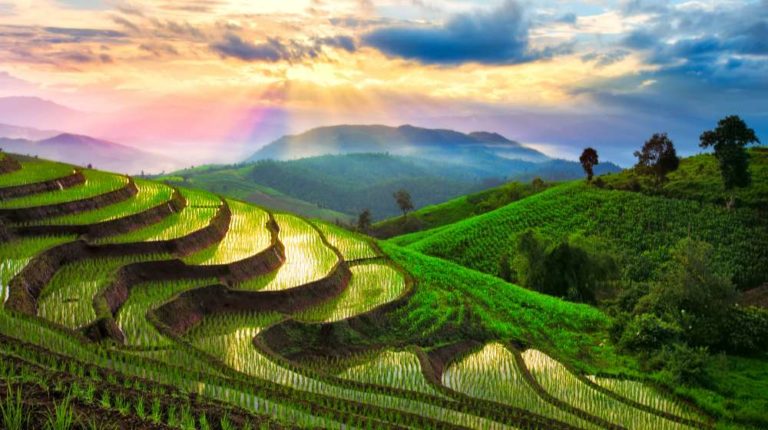Resources – Soil and Water Study Guide
Introduction:
Although water covers more than 70% of the planet’s surface, there is a water shortage! Drinking water is limited and, therefore, should be utilized with utmost care. Both water and soil are renewable resources and provide us with numerous benefits, but exploitation of these resources can be very detrimental to human life.
Let’s know more about these resources in the following sections.
Soil and Water
- Soil and water resources must be maintained and conserved to provide a reliable food supply for future generations.
- Additionally, the earth nourishes plants while anchoring their roots to the ground and protecting them from abrasion.
- Given the rapid pace at which humans use these two commodities, their availability is dwindling at an alarming rate.
- Freshwater depletion is a severe issue in many nations, particularly in developing ones.
- Soil erosion is caused mainly by factors, including rainfall, wind, and industrial activity.
Soil
- The term ‘soil’ refers to the material that covers the planet’s surface and describes the composition of this material.
- A grainy substance composed of biological waste, mineral deposits, eroded rocks, and others connected to the ecosystem is the most concise description of what it is.
Weathering is the process by which soil is formed, and it is this process that makes the soil fertile for the growth of plants and other living organisms.
Soil Formation
Soil development does not occur uniformly around the globe; it differs by region. The construction of soil also takes time. The following factors affect soil formation and soil resources:
- The progenitor rock’s qualities
- Weather-related variables
- Topography
- Organic matter
Soil Deterioration and Preservation
Soil is a natural resource, and two of the most critical threats are soil erosion and deterioration. Land degradation occurs due to various factors, including deforestation, overgrazing, the excessive use of chemical fertilizers and pesticides, rain wash, landslides, and floods.
The following activities owing to soil resources should be taken to safeguard the soil:
– Mulching is a strategy for conserving moisture in the soil that involves covering a barren area between plants with an organic layer, such as straw.
– Contour barriers – Trenches are excavated along the contour and filled with stones, grass, and soil to collect water. These barriers are employed to keep the area dry.
– Rock Dam – Rock dams are erected to prevent soil erosion and gully development by stacking stones together.
– Terrace farming – This is used on steep slopes to reduce surface runoff and soil erosion. To assist with this endeavor, broad flat stairs are erected. This enables the growth of crops in the previously accessible flat space.
– Intercropping – This process involves planting different crops in separate rows of the same field to protect the soil from rain wash. This practice aids in the protection of the soil from rainwash.
– Contour plowing is a technique for establishing a natural barrier that keeps water from running down a slope. Parallel plowing is used to follow the contours of the hill.
– Shelterbelts – Rows of trees are planted in coastal and dry areas to create a protective layer of soil cover.
Water
-
Water is a sustainable natural resource that supports many plant and animal life since it covers about three-fourths of the planet’s surface.
-
Of the 2.7% consumed by humans, 70% are ice sheets and glaciers in the largest reservoir of freshwater, Antarctica, Greenland, and mountainous regions.
-
After processing this ice, only 1% is still acceptable for human use.
-
One percent of the world’s available importance of water resources comes from various sources, including groundwater, water resources for agriculture, surface water in rivers and lakes, and atmospheric water vapor.
-
Water is the only material whose quantity is unaffected by changes in temperature since it can never be added to or subtracted from.
-
In addition to being utilized for drinking, water is also used in the production process.
-
Humans use water for many reasons, including agriculture, manufacturing, and the creation of electricity through dam reservoirs.
It is essential to understand the importance of water resources.
Sustainability of Water
The availability of clean drinking water is one of the world’s most critical challenges today. Without water, life on earth would be impossible. Consequently, it has become crucial to adopt measures to preserve the largest freshwater reservoir on earth.
- Along with other causes, waste material dumped into bodies of water by enterprises contributes significantly to water pollution. Before discharging garbage, it is required to treat it.
- Canals used for irrigation should be well-lined to prevent water seepage and evaporation losses.
- Forests and other vegetation will assist in delaying runoff and replenishing underground water sources.
- Drip or trickle irrigation should be utilized in dry areas instead of flood irrigation.
Conclusion:
- Abiotic resources, which include land, soil, and water, are vital.
- Soil and water are two types of resources.
- Because biological and abiotic resources are both finite, careful management is essential for their long-term viability.
We must be considerate of the land, soil, and water resources that are available to us!
FAQs:
1. What is the relationship between water and soil resources?
Water and soil are vital to life on earth. These resources are linked. Uncared for, these resources may decay. Soil and water must be harmonized for life to thrive. This soil-water connection is vital for our planet’s ecosystems.
2. What type of resource is soil?
Soil is a non-renewable resource. Food security and a sustainable future are contingent upon its preservation. As a finite resource, soil cannot be replaced or repaired throughout a human lifetime.
3. What are the sources of soil water?
Soil water is essential for plant growth and occurs in several forms. It is collected from the soil through transpiration, inorganic or organic. During photosynthesis, plants emit soil moisture into the air. Plants’ capacity to retain soil moisture is vital. It also helps avoid desertification and promotes plant development.
4. What are the natural resources of soil?
Soil contains both dead and living creatures. It contains minerals and water. Surprising responses from soil resources It is a living resource for many life forms. Despite being a fundamental mix of these elements, the soil has its unique natural characteristics.
5. What is water as a resource?
Surface water, river flow, groundwater, and frozen water are all-natural freshwater sources. These natural water sources are beneficial as a possible water supply source. Freshwater sources include recovered wastewater and desalinated saltwater.Both freshwater and processed water are resources. Although renewable, freshwater is not endless.
6. Why is soil called a resource?
Soil is a significant human resource. It avoids floods and cleans rainwater. Soil is vital to the ecosystem. Why do we need soil? We consume 98.8% of our meals there! Soil decomposes pollutants and filters water. It’s the cornerstone of terrestrial ecosystems and a vital agricultural resource.
7. What are the five mineral resources?
Mineral resources are classified into two types: non-metallic and metallic. Metals such as gold, silver, tin, copper, and lead may be mined for their metallic characteristics. Non-metallic resources include gypsum and dimension stone.
We hope you enjoyed studying this lesson and learned something remarkable about Resources – Soil and Water! Join our Discord community to get any questions you may have answered and to engage with other students just like you! Don’t forget to download our App to experience our fun, VR classrooms – we promise, it makes studying much more fun! 😎
Sources:
- Soil and Water. https://flexbooks.ck12.org/cbook/ck-12-biology-flexbook-2.0/section/6.28/primary/lesson/soil-and-water-resources-bio/. Accessed 1 Dec, 2021.
- Soil is a non-renewable resource. Its preservation is essential for food security and our sustainable future. https://www.fao.org/resources/infographics/infographics-details/en/c/278954/. Accessed 1 Dec, 2021.
- Soil water. https://www.qld.gov.au/environment/land/management/soil/soil-properties/water. Accessed 1 Dec, 2021.
- Soils and Water. https://www.isric.org/utilise/global-issues/water. Accessed 1 Dec, 2021.




